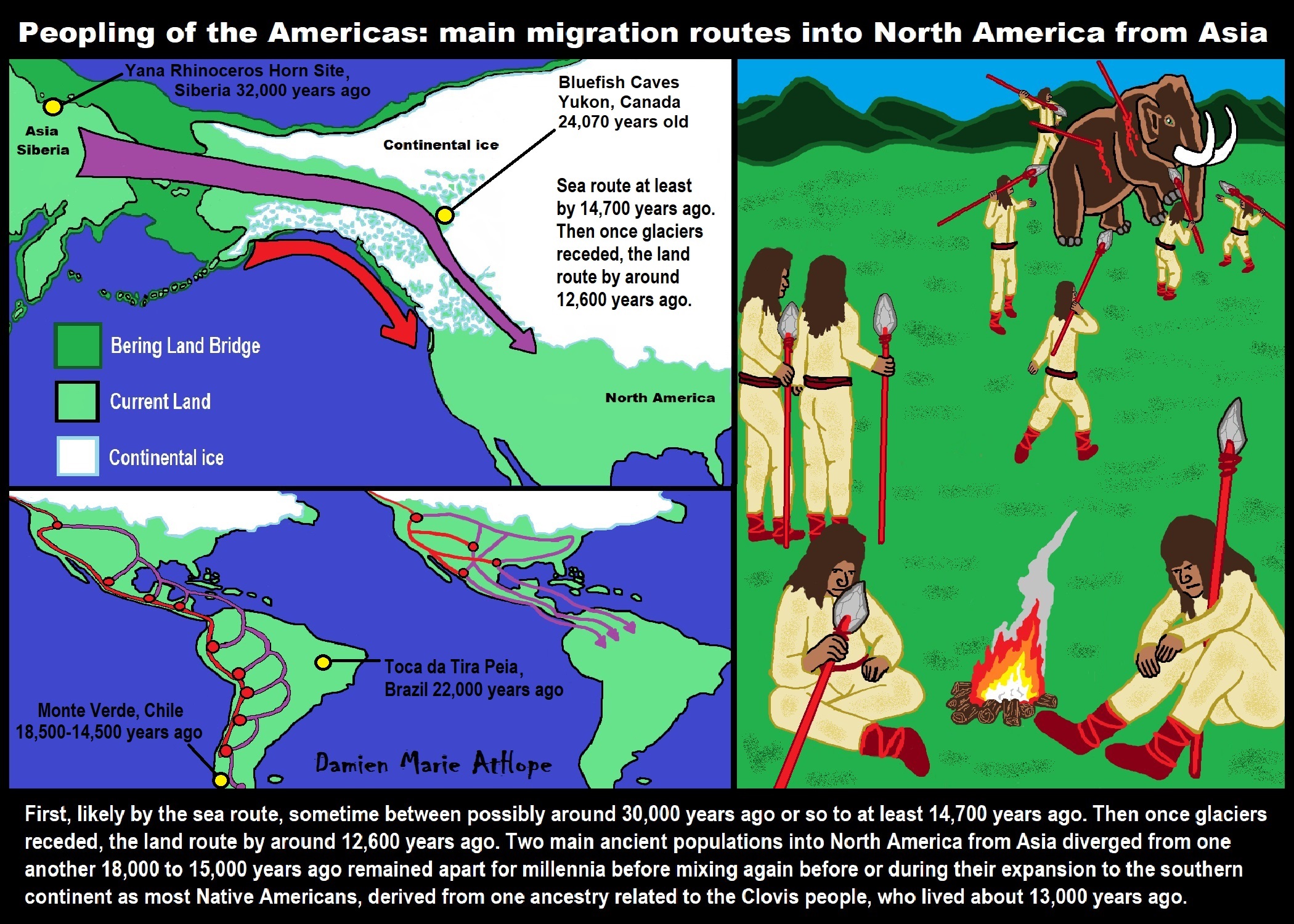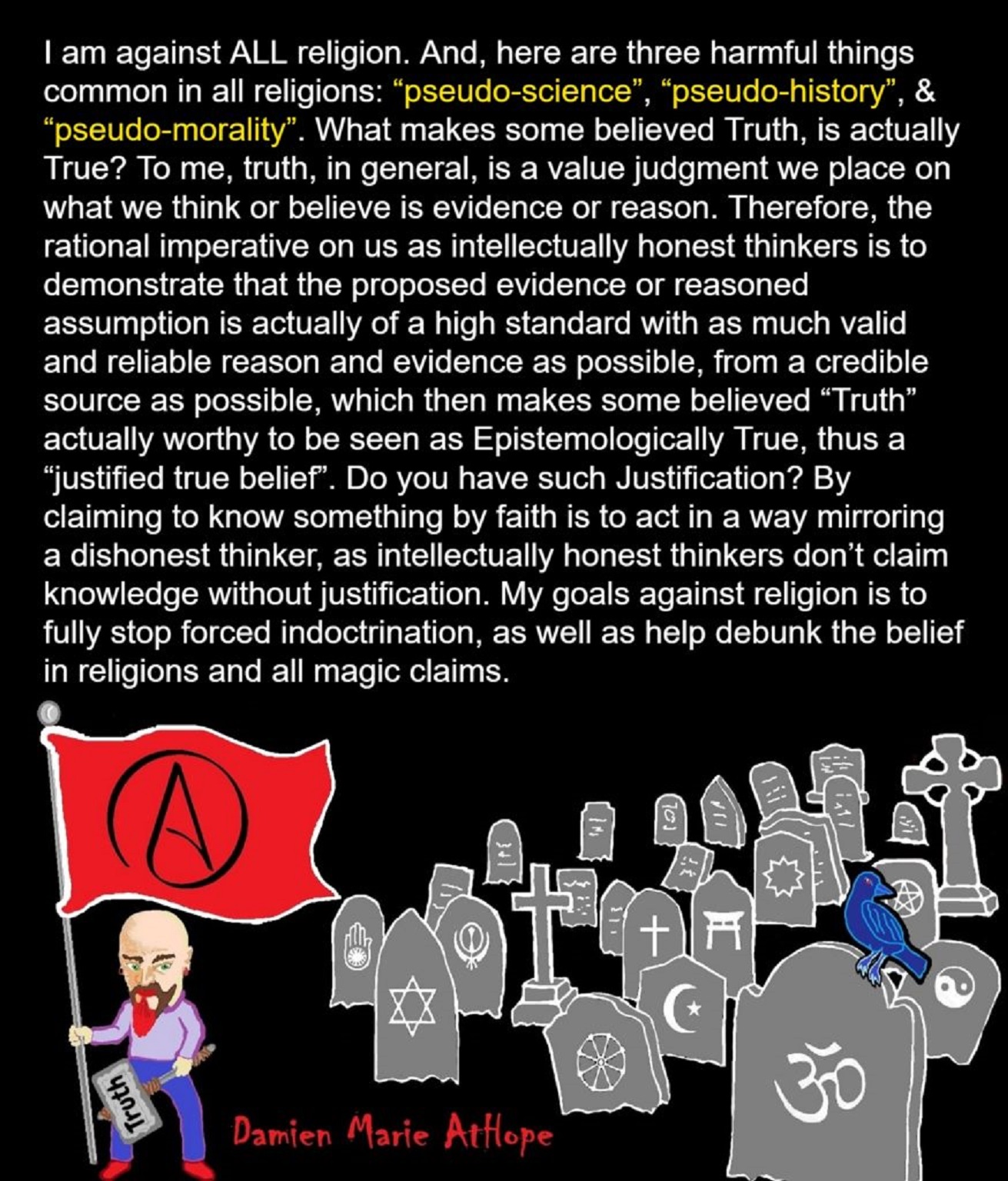Source Populations for the Peopling of the Americas
“Genetic studies have used high-resolution analytical techniques applied to DNA samples from modern Native Americans and Asian populations regarded as their source populations to reconstruct the development of human Y-chromosome DNA haplogroups (yDNA haplogroups) and human mitochondrial DNA haplogroups (mtDNA haplogroups) characteristic of Native American populations. Models of molecular evolution rates were used to estimate the ages at which Native American DNA lineages branched off from their parent lineages in Asia and to deduce the ages of demographic events. One model (Tammetal 2007) based on Native American mtDNA Haplotypes (Figure 2) proposes that migration into Beringia occurred between 30,000 and 25,000 years ago, with migration into the Americas occurring around 10,000 to 15,000 years after isolation of the small founding population. Another model (Kitchen et al. 2008) proposes that migration into Beringia occurred approximately 36,000 years ago, followed by 20,000 years of isolation in Beringia. A third model (Nomatto et al. 2009) proposes that migration into Beringia occurred between 40,000 and 30,000 years ago, with a pre-LGM migration into the Americas followed by isolation of the northern population following the closure of the ice-free corridor. Evidence of Australo-Melanesians admixture in Amazonian populations was found by Skoglund and Reich (2016).” ref
“A study of the diversification of mtDNA Haplogroups C and D from southern Siberia and eastern Asia, respectively, suggests that the parent lineage (Subhaplogroup D4h) of Subhaplogroup D4h3, a lineage found among Native Americans and Han Chinese, emerged around 20,000 years ago, constraining the emergence of D4h3 to post-LGM. Age estimates based on Y-chromosome micro-satellite diversity place origin of the American Haplogroup Q1a3a (Y-DNA) at around 15,000 to 10,000 years ago. Greater consistency of DNA molecular evolution rate models with each other and with archaeological data may be gained by the use of dated fossil DNA to calibrate molecular evolution rates. The Ancient Beringian (AB) is a specific archaeogenetic lineage, based on the genome of an infant found at the Upward Sun River site (dubbed USR1), dated to 11,500 years ago. The AB lineage diverged from the Ancestral Native American (ANA) lineage about 20,000 years ago. The ANA lineage was estimated as having been formed between 20,000 and 25,000 years ago by a mixture of East Asian and Ancient North Eurasian lineages, consistent with the model of the peopling of the Americas via Beringia during the Last Glacial Maximum.” ref
“The precise date for the peopling of the Americas is a long-standing open question, and while advances in archaeology, Pleistocene geology, physical anthropology, and DNA analysis have progressively shed more light on the subject, significant questions remain unresolved. The “Clovis first theory” refers to the hypothesis that the Clovis culture represents the earliest human presence in the Americas about 13,000 years ago. Evidence of pre-Clovis cultures has accumulated and pushed back the possible date of the first peopling of the Americas. Academics generally believe that humans reached North America south of the Laurentide Ice Sheet at some point between 15,000 and 20,000 years ago. Some new controversial archaeological evidence suggests the possibility that human arrival in the Americas may have occurred prior to the Last Glacial Maximum more than 20,000 years ago.
“The Native American source population was formed in Siberia by the mixing of two distinct populations: Ancient North Eurasians and an ancient East Asian (ESEA) population. According to Jennifer Raff, the Ancient North Eurasian population mixed with a daughter population of ancient East Asians, who they encountered around 25,000 years ago, which led to the emergence of Native American ancestral populations. However, the exact location where the admixture took place is unknown, and the migratory movements that united the two populations are a matter of debate. One theory supposes that Ancient North Eurasians migrated south to East Asia, or Southern Siberia, where they would have encountered and mixed with ancient East Asians. Genetic evidence from Lake Baikal in Mongolia supports this area as the location where the admixture took place. ” ref
“However, a third theory, the “Beringian standstill hypothesis”, suggests that East Asians instead migrated north to Northeastern Siberia, where they mixed with ANE, and later diverged in Beringia, where distinct Native American lineages formed. This theory is supported by maternal and nuclear DNA evidence. According to Grebenyuk, after 20,000 years ago, a branch of Ancient East Asians migrated to Northeastern Siberia, and mixed with descendants of the ANE, leading to the emergence of Ancient Paleo-Siberian and Native American populations in Extreme Northeastern Asia. However, the Beringian standstill hypothesis is not supported by paternal DNA evidence, which may reflect different population histories for paternal and maternal lineages in Native Americans, which is not uncommon and has been observed in other populations. A 2019 study suggested that Native Americans are the closest living relatives to 10,000-year-old fossils found near the Kolyma River in northeastern Siberia. A study published in July 2022 suggested that people in southern China may have contributed to the Native American gene pool, based on the discovery and DNA analysis of 14,000-year-old human fossils. The contrast between the genetic profiles of the Hokkaido Jōmon skeletons and the modern Ainu illustrates another uncertainty in source models derived from modern DNA samples: The development of high-resolution genomic analysis has provided opportunities to further define Native American subclades and narrow the range of Asian subclades that may be parent or sister subclades.” ref
“The common occurrence of the mtDNA Haplogroups A, B, C, and D among eastern Asian and Native American populations has long been recognized, along with the presence of haplogroup X. As a whole, the greatest frequency of the four Native-American-associated haplogroups occurs in the Altai–Baikal region of southern Siberia. Some subclades of C and D closer to the Native American subclades occur among Mongolian, Amur, Japanese, Korean, and Ainu populations. With further definition of subclades related to Native American populations, the requirements for sampling Asian populations to find the most closely related subclades grow more specific. Subhaplogroups D1 and D4h3 have been regarded as Native American specific based on their absence among a large sampling of populations regarded as potential descendants of source populations, over a wide area of Asia. Among the 3,764 samples, the Sakhalin–lower Amur region was represented by 61 Oroks.” ref
“In another study, Subhaplogroup D1a has been identified among the Ulchis of the lower Amur River region (4 among 87 sampled, or 4.6%), along with Subhaplogroup C1a (1 among 87, or 1.1%). Subhaplogroup C1a is regarded as a close sister clade of the Native American Subhaplogroup C1b. Subhaplogroup D1a has also been found among ancient Jōmon skeletons from Hokkaido The modern Ainu are regarded as descendants of the Jōmon. The occurrence of the Subhaplogroups D1a and C1a in the lower Amur region suggests a source population from that region distinct from the Altai-Baikal source populations, where sampling did not reveal those two particular subclades. The conclusions regarding Subhaplogroup D1 indicating potential source populations in the lower Amur and Hokkaido areas stand in contrast to the single-source migration model. Subhaplogroup D4h3 has been identified among Han Chinese. Subhaplogroup D4h3 from China does not have the same geographic implication as Subhaplotype D1a from Amur-Hokkaido, so its implications for source models are more speculative. Its parent lineage, Subhaplotype D4h, is believed to have emerged in East Asia, rather than Siberia, around 20,000 years ago. Subhaplogroup D4h2, a sister clade of D4h3, has also been found among Jōmon skeletons from Hokkaido. D4h3 has a coastal trace in the Americas.
“X is one of the five mtDNA haplogroups found in Indigenous Americans. Native Americans mostly belong to the X2a clade, which has never been found in the Old World. According to Jennifer Raff, X2a probably originated in the same Siberian population as the other four founding maternal lineages, and that there is no compelling reason to believe it is related to X lineages found in Europe or West Eurasia. The Kennewick man fossil was found to carry the deepest branch of the X2a haplogroup, and he did not have any European ancestry that would be expected for a European origin of the lineage. The Human T cell Lymphotrophic Virus 1 (HTLV-1) is a virus transmitted through exchange of bodily fluids and from mother to child through breast milk. The mother-to-child transmission mimics a hereditary trait, although such transmission from maternal carriers is less than 100%. The HTLV virus genome has been mapped, allowing identification of four major strains and analysis of their antiquity through mutations. The highest geographic concentrations of the strain HLTV-1 are in sub-Saharan Africa and Japan.” ref
“In Japan, it occurs in its highest concentration on Kyushu. It is also present among African descendants and native populations in the Caribbean region and South America. It is rare in Central America and North America. Its distribution in the Americas has been regarded as due to importation with the slave trade. The Ainu have developed antibodies to HTLV-1, indicating its endemicity to the Ainu and its antiquity in Japan. A subtype “A” has been defined and identified among the Japanese (including Ainu), and among Caribbean and South American isolates. A subtype “B” has been identified in Japan and India. In 1995, Native Americans in coastal British Columbia were found to have both subtypes A and B. Bone marrow specimens from an Andean mummy about 1500 years old were reported to have shown the presence of the A subtype. The finding ignited controversy, with contention that the sample DNA was insufficiently complete for the conclusion and that the result reflected modern contamination. However, a re-analysis indicated that the DNA sequences were consistent with, but not definitely from, the “cosmopolitan clade” (subtype A). The presence of subtypes A and B in the Americas is suggestive of a Native American source population related to the Ainu ancestors, the Jōmon.” ref
“Paleo-Indian skeletons in the Americas such as Kennewick Man (Washington State), Hoya Negro skeleton (Yucatán), Luzia Woman and other skulls from the Lagoa Santa site (Brazil), Buhl Woman (Idaho), Peñon Woman III, two skulls from the Tlapacoya site (Mexico City), and 33 skulls from Baja California have exhibited certain craniofacial traits distinct from most modern Native Americans, leading physical anthropologists to posit an earlier “Paleoamerican” population wave. The most basic measured distinguishing trait is the dolichocephaly of the skull. Some modern isolated populations such as the Pericúes of Baja California and the Fuegians of Tierra del Fuego exhibit that same morphological trait. Other anthropologists advocate an alternative hypothesis that evolution of an original Beringian phenotype gave rise to a distinct morphology that was similar in all known Paleoamerican skulls, followed by later convergence towards the modern Native American phenotype.” ref
“Archaeogenetic studies do not support a two-wave model or the Paleoamerican hypothesis of an Australo-Melanesian origin, and firmly assign all Paleo-Indians and modern Native Americans to one ancient population that entered the Americas in a single migration from Beringia. Only in one ancient specimen (Lagoa Santa) and a few modern populations in the Amazon region, a small Australasian ancestry component of c. 3% was detected, which remains unexplained by the current state of research (as of 2021), but may be explained by the presence of the more basal Tianyuan-related ancestry, a deep East Asian lineage which did not directly contribute to modern East Asians but may have contributed to the ancestors of Native Americans in Siberia, as such ancestry is also found among previous Paleolithic Siberians (Ancient North Eurasians).” ref
“A report published in the American Journal of Physical Anthropology in January 2015 reviewed craniofacial variation focusing on differences between early and late Native Americans and explanations for these based on either skull morphology or molecular genetics. Arguments based on molecular genetics have in the main, according to the authors, accepted a single migration from Asia with a probable pause in Beringia, plus later bi-directional gene flow. Some studies focusing on craniofacial morphology have previously argued that Paleoamerican remains have been described as closer to Australo-Melanesians and Polynesians than to the modern series of Native Americans, suggesting two entries into the Americas, an early one occurring before a distinctive East Asian morphology developed (referred to in the paper as the “Two Components Model”). Another “third model”, the “Recurrent Gene Flow” (RGF) model, attempts to reconcile the two, arguing that circumarctic gene flow after the initial migration could account for morphological changes. It specifically re-evaluates the original report on the Hoya Negro skeleton which supported the RGF model, the authors disagreed with the original conclusion which suggested that the skull shape did not match those of modern Native Americans, arguing that the “skull falls into a subregion of the morphospace occupied by both Paleoamericans and some modern Native Americans.” ref
“Stemmed points are a lithic technology distinct from Beringian and Clovis types. They have a distribution ranging from coastal East Asia to the Pacific coast of South America. The emergence of stemmed points has been traced to Korea during the upper Paleolithic. The origin and distribution of stemmed points have been interpreted as a cultural marker related to a source population from coastal East Asia. The Indigenous peoples of the Americas have ascertained archaeological presence in the Americas dating back to about 15,000 years ago. More recent research, however, suggests a human presence dating to between 18,000 and 26,000 years ago, during the Last Glacial Maximum. There remain uncertainties regarding the precise dating of individual sites and regarding conclusions drawn from population genetics studies of contemporary Native Americans.” ref
“Genetic diversity and population structure in the American land mass using DNA micro-satellite markers (genotype) sampled from North, Central, and South America have been analyzed against similar data available from other Indigenous populations worldwide. The Amerindian populations show a lower genetic diversity than populations from other continental regions. Decreasing genetic diversity with increasing geographic distance from the Bering Strait can be seen, as well as a decreasing genetic similarity to Siberian populations from Alaska (genetic entry point). A higher level of diversity and lower level of population structure in western South America compared to eastern South America is observed. A relative lack of differentiation between Mesoamerican and Andean populations is a scenario that implies coastal routes were easier than inland routes for migrating peoples (Paleo-Indians) to traverse. The overall pattern that is emerging suggests that the Americas were recently colonized by a small number of individuals (effective size of about 70–250), and then they grew by a factor of 10 over 800–1,000 years.” ref
“The data also show that there have been genetic exchanges between Asia, the Arctic, and Greenland since the initial peopling of the Americas. A new study in early 2018 suggests that the effective population size of the original founding population of Native Americans was about 250 people. “Pre-Columbian population figures are difficult to estimate due to the fragmentary nature of the evidence. Estimates range from 8–112 million. Scholars have varied widely on the estimated size of the Indigenous populations prior to colonization and on the effects of European contact. Estimates are made by extrapolations from small bits of data. A 2020 genetic study suggests that prior estimates for the pre-Columbian Caribbean population may have been at least tenfold too large. Historian David Stannard estimates that the extermination of Indigenous peoples took the lives of 100 million people: “…the total extermination of many American Indian peoples and the near-extermination of others, in numbers that eventually totaled close to 100,000,000.” ref
Chumash Indians With a 13,000-year History Show us Caring for Others is Civilized Humanity
Before the arrival of the so-called civilized foreigners, there were no locks on our doors; in fact, there were seldom even doors. There was little emphasis on private property instead of things were valued more for the good of the community. There was no poor, no hungry while others ate. All were involved and cared for, no one had to beg. Nature and others where respected taking only what one needed without creating pollution and yet when the white man came they claimed we were uncivilized.
The painting above is an artist’s depiction of Chumash Village from an outdoor display in the town of Lompoc, Ca. drawn by Robert Thomas and a Team of Local Artists.
Chumash 13,000-year historical time line
The Chumash Indians? Chumash (“Chu mash), a label chosen by an Anglo anthropologist, comes from the word used by the Coastal Chumash for either the Santa Cruz (Mi-tcu-mac) Indians or the Santa Rosa (Tcu-mac) Indians. The Chumash in the Santa Barbara and Ventura Counties were extremely peaceful. The Chumash homeland lies along the coast of California, between Malibu and Paso Robles, as well as on the Northern Channel Islands. In the pre-contact era, the Chumash were never one, discreet linguistic or cultural entity but did have regional federations. Each Chumash regional group—Barbareno, Ynezeno, and Ventureno (Eastern Coastal); Obispeno and Purisimeno; Island Chumash; and Interior Chumash—has its own self-designation.
The Chumash are sometimes referred to as the Santa Barbara Indians. The Chumash were organized by village rather than by tribe. The Chumash was a Matriarchal Linear Society. The female Chumash ran and organized the settlements through group decisions, councils, and a ‘Wot’, chieftain. Matriarchal Linear (or Lineage) means that the family name stays on the mother’s side. Males married into the females’ family. Coast villages maintained patrilineal descent groups. Each contained three or four captains, one of whom was head chief. ‘Wot’s’ were often male and they would lead activities beyond the settlement. Women could inherit the position of ‘Wot’ head chief. A ‘Wot’ chief’s formal power was limited to leading in war, presiding at ceremonies, and granting hunting permissions.
The Chumash did not waste any part of any animal they killed, or any plant they pulled from the earth. They lived according to “nature’s time”, and believed that man’s greed and desire for supremacy could eventually lead to his downfall. This is true with many Native American families. While the Chumash were very peaceful reasons for war mainly included trespass, or defense (interior Indian peoples occasionally attacked the Coastal Chumash). Rules of engagement were highly formalized. In general, however, the Chumash seldom engaged in actual warfare. The 1824 revolt against the Mexicans stands out as the major historical conflict. Before the Mission Period, the Chumash lived in 150 independent villages with a total population of about 18,000-20,000 people.
Ironically, the Chumash are now a people without land to call their own, as most Chumash bands have not, with the exception of the Santa Ynez Samala band, yet made the list of federally recognized tribes. Once a thriving culture, the Chumash, as did other Native American tribes, succumbed to Spanish conquistadors and American colonists.
If you don’t think different you will not behave differently, if you have never lived differently it is hard to see things differently thus unknowingly or not bound by limited encapsulation. This issue of equality needs more than a voice of reason; it needs the momentum of action and more action.
Here is some thoughts inspired by Chumash ethics and their belief in the reciprocity of social life, and the worldview of the people. If one observed the virtues which belonged to the rays of the sun, shining the same upon everyone offering its light to all plant, animal, human, alike without distinction. They too would have noble feelings about helping others, striving to be like a ray of connected virtues offering their caring light equally to all of the world.
12,000 – 7,000 Years Ago – Paleo-Indian Culture (The Americas)
Out of Africa: “the evolution of religion seems tied to the movement of people”
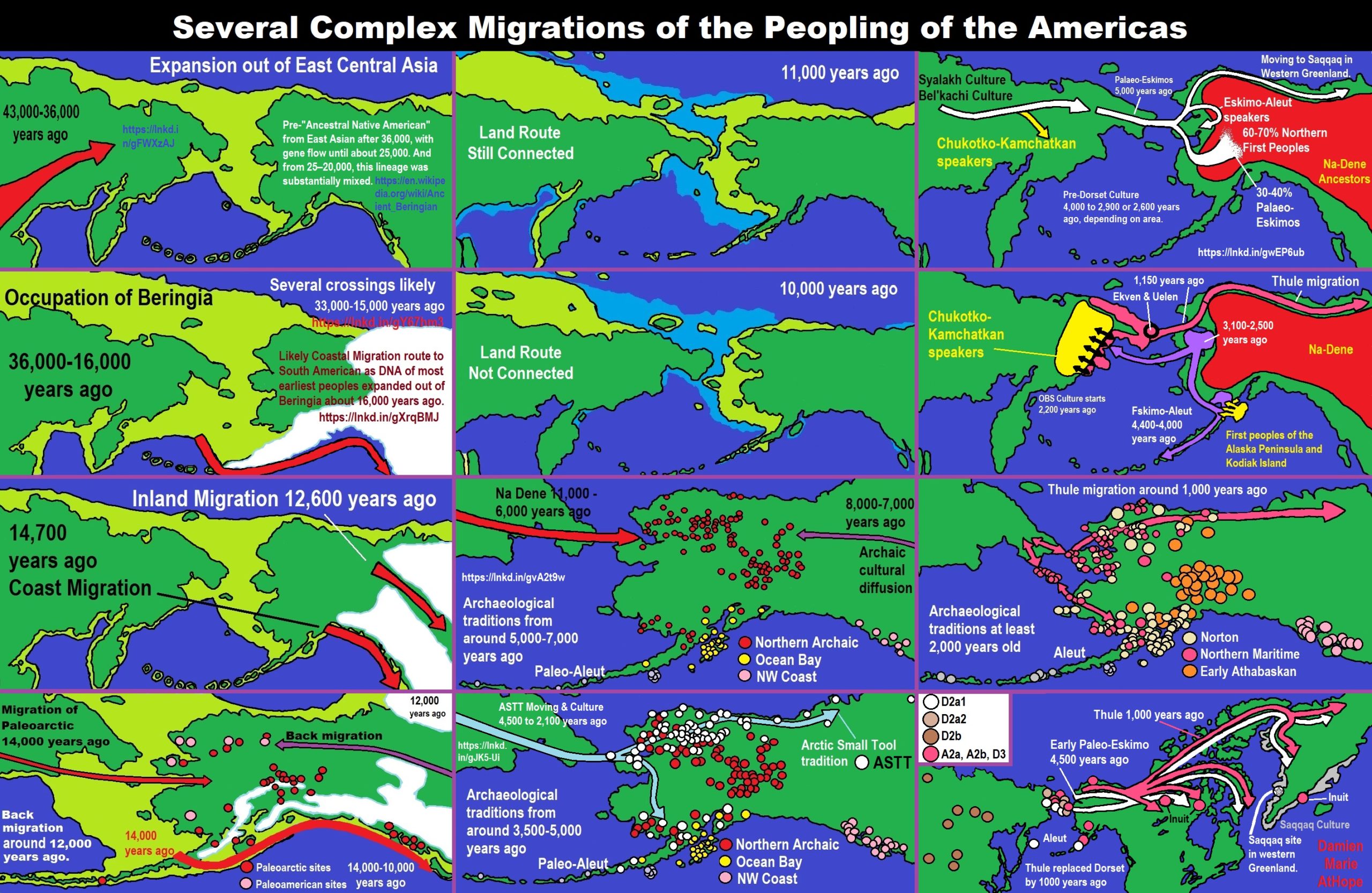
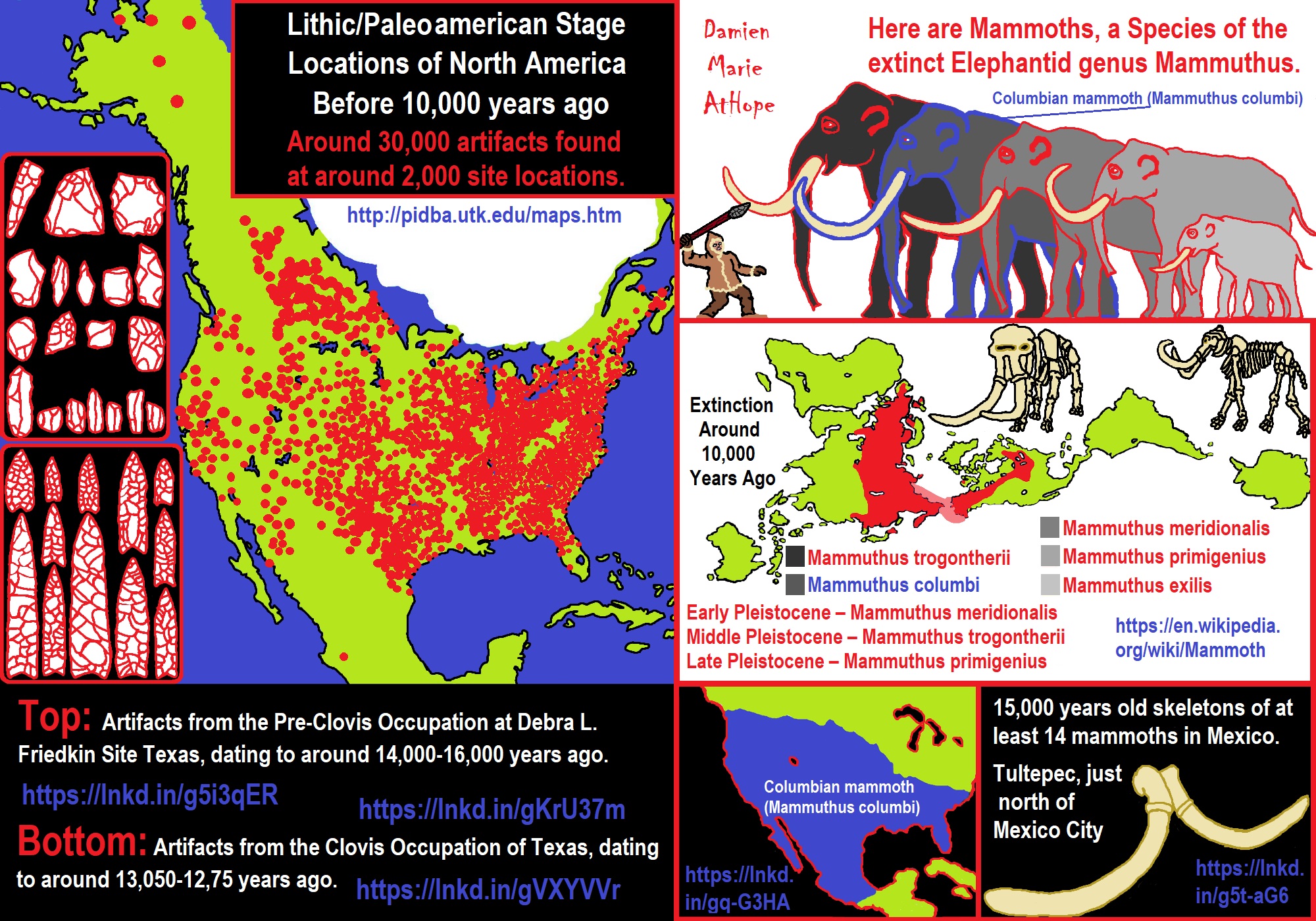
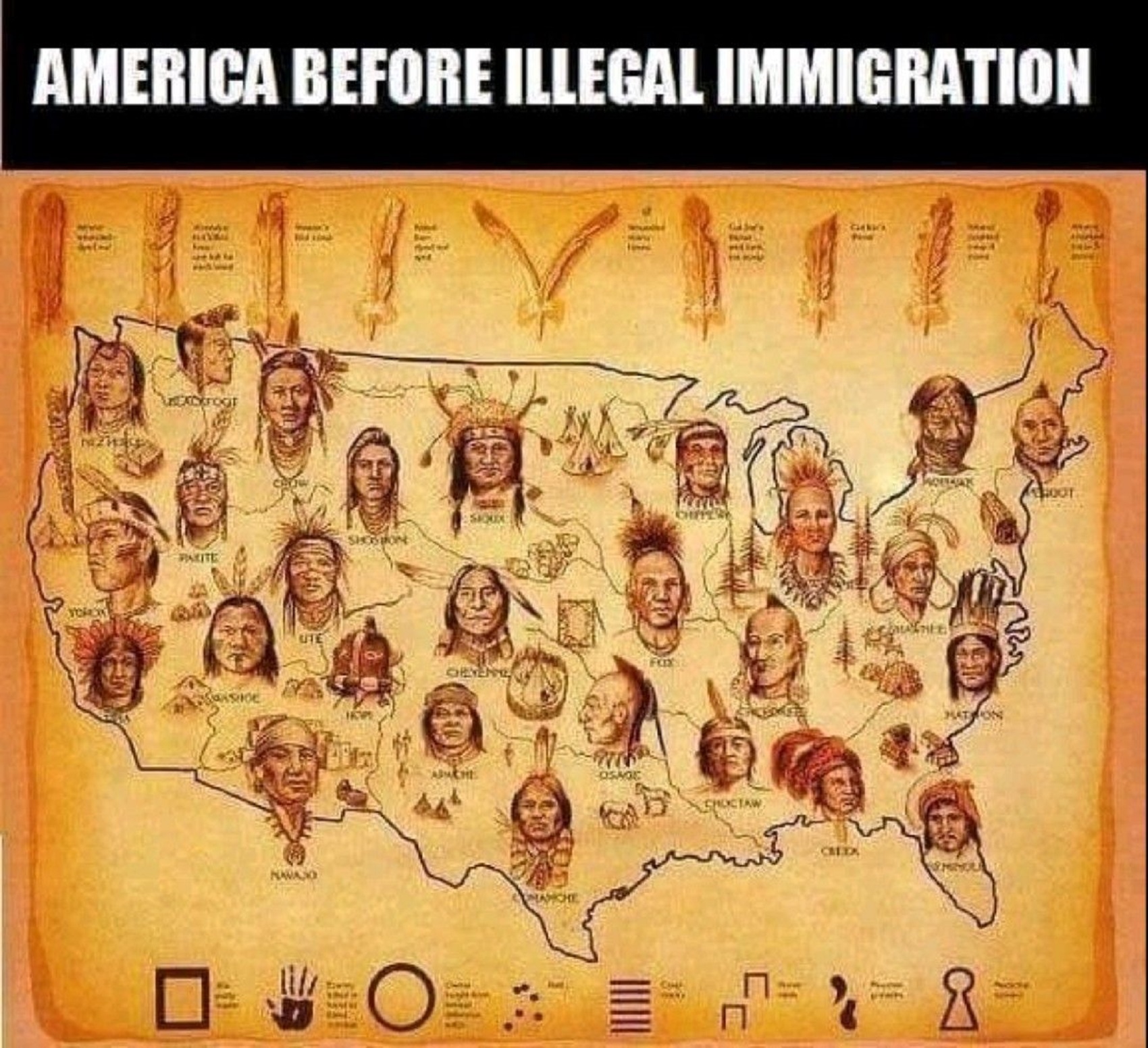
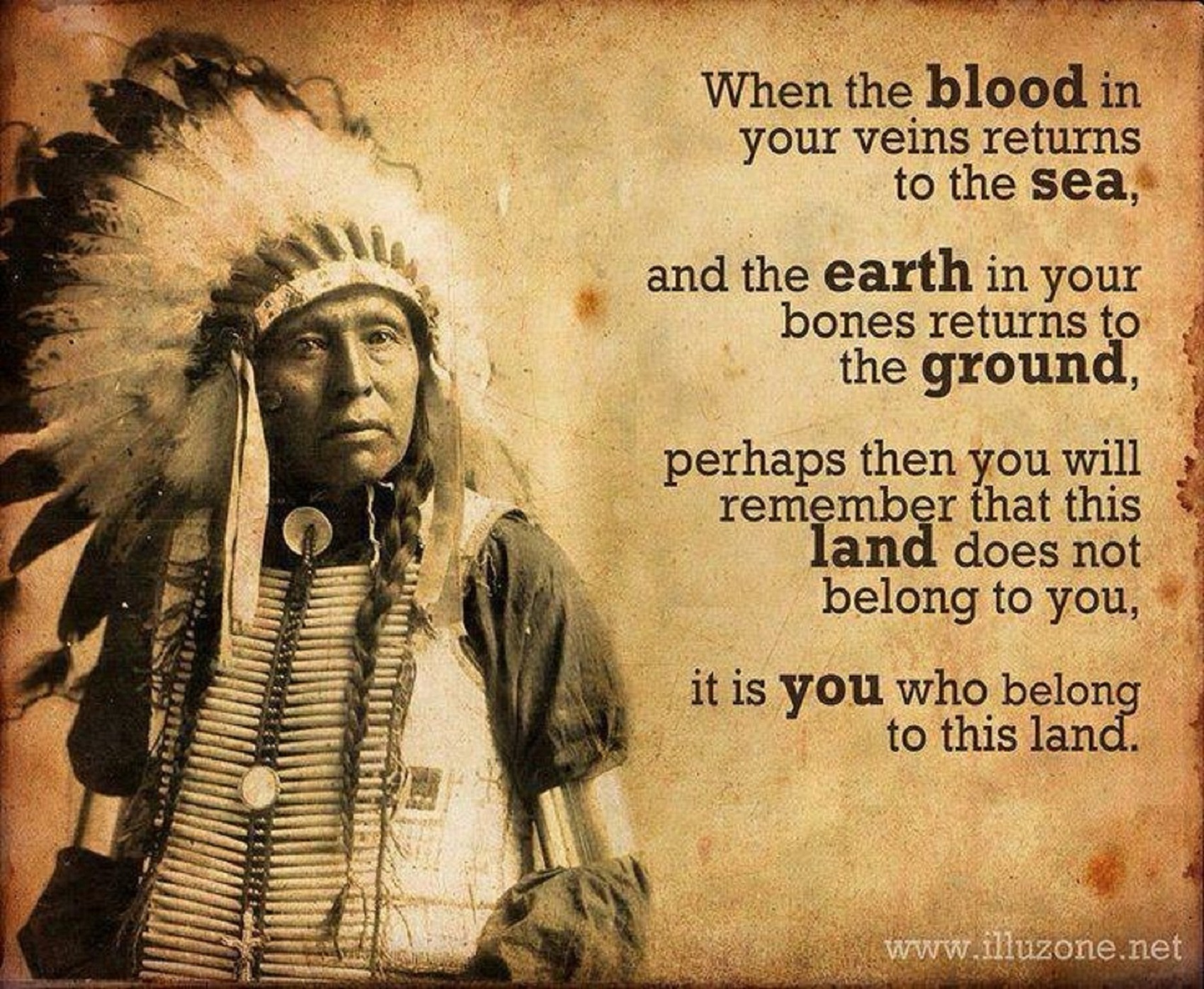


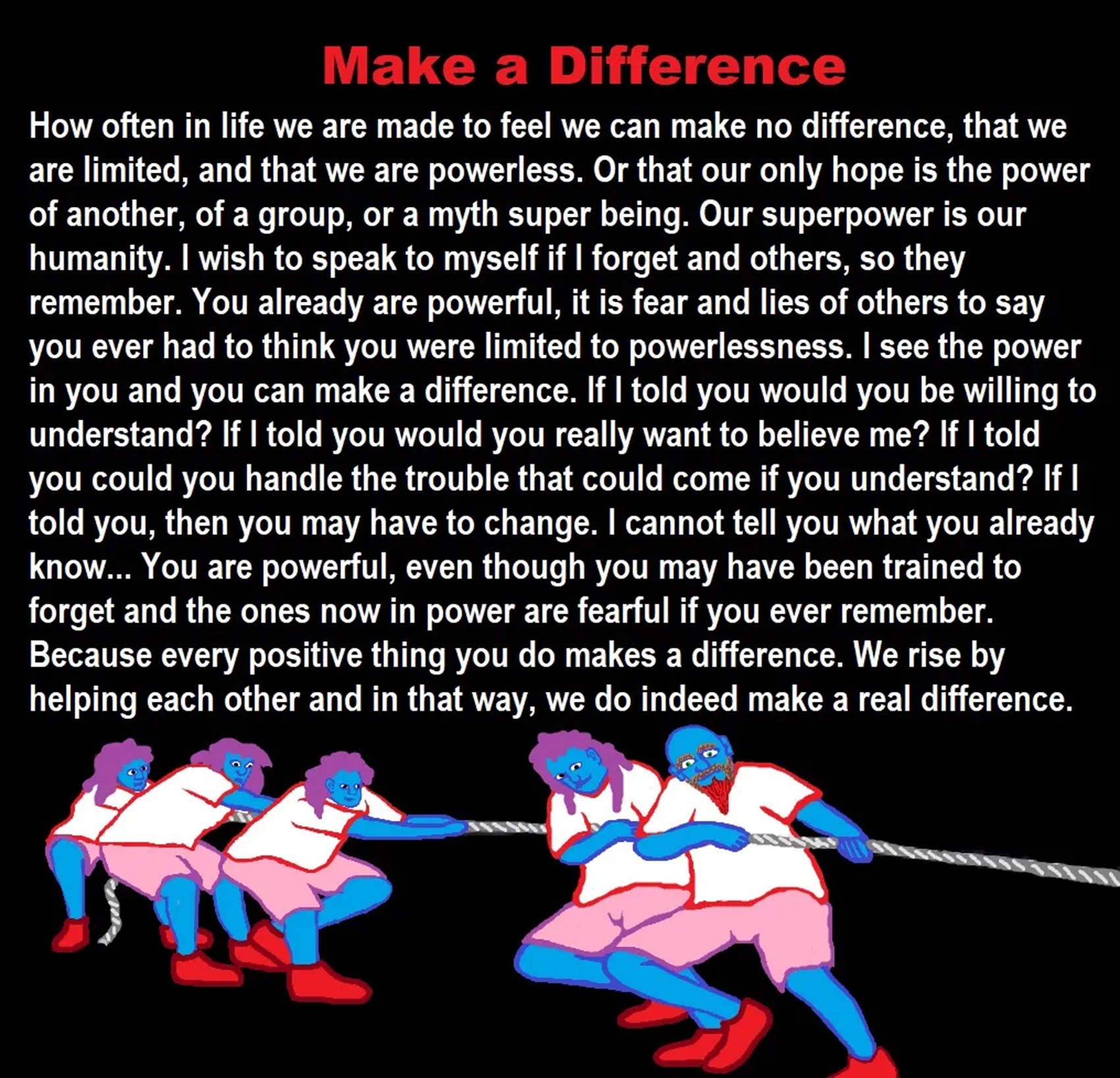



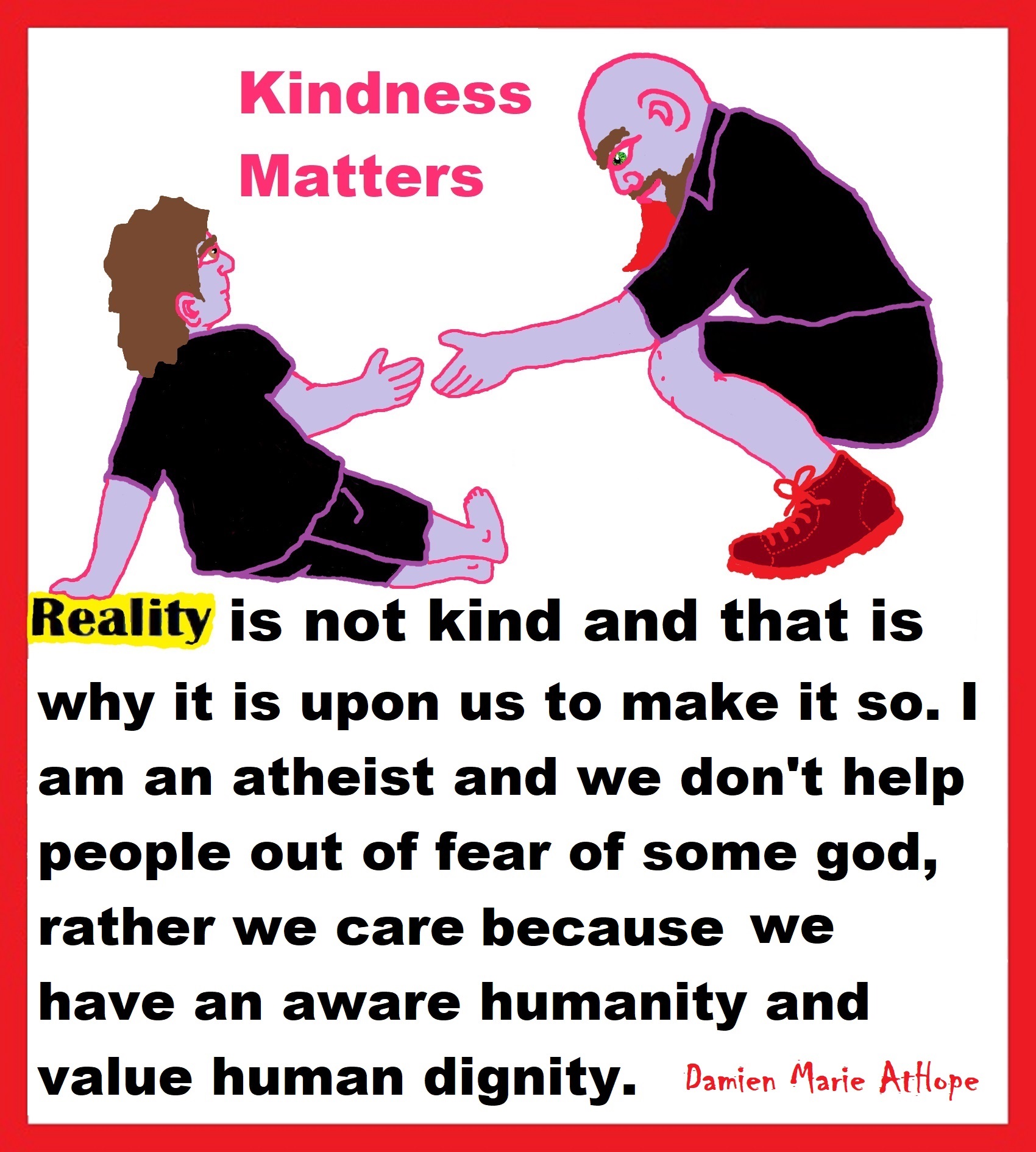

People don’t commonly teach religious history, even that of their own claimed religion. No, rather they teach a limited “pro their religion” history of their religion from a religious perspective favorable to the religion of choice.
We are like believing machines we vacuum up ideas, like Velcro sticks to almost everything. We accumulate beliefs that we allow to negatively influence our lives, often without realizing it. Our willingness must be to alter skewed beliefs that impend our balance or reason, which allows us to achieve new positive thinking and accurate outcomes.
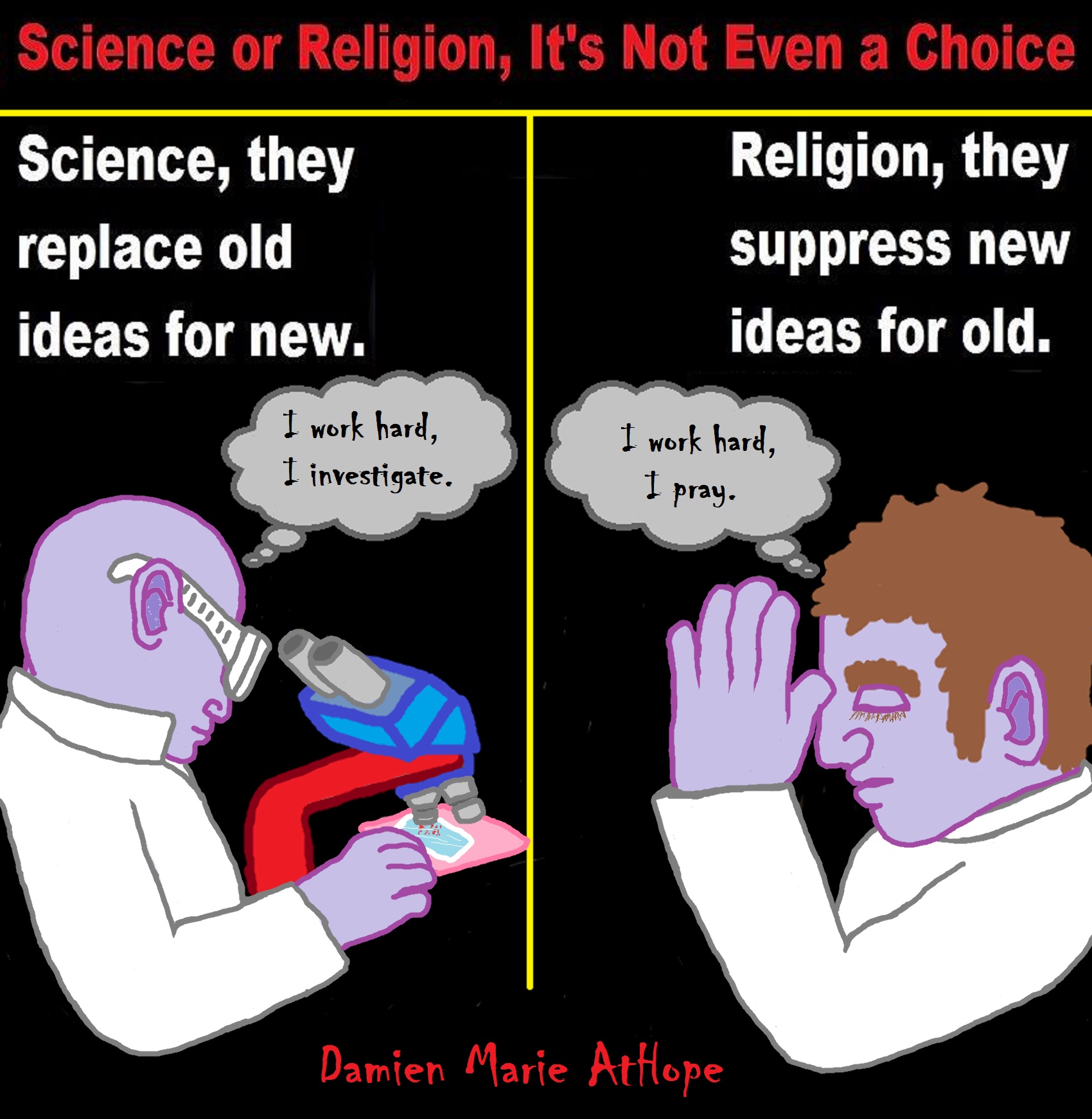
Do you truly think “Religious Belief” is only a matter of some personal choice?
Do you not see how coercive one’s world of choice is limited to the obvious hereditary belief, in most religious choices available to the child of religious parents or caregivers? Religion is more commonly like a family, culture, society, etc. available belief that limits the belief choices of the child and that is when “Religious Belief” is not only a matter of some personal choice and when it becomes hereditary faith, not because of the quality of its alleged facts or proposed truths but because everyone else important to the child believes similarly so they do as well simply mimicking authority beliefs handed to them. Because children are raised in religion rather than being presented all possible choices but rather one limited dogmatic brand of “Religious Belief” where children only have a choice of following the belief as instructed, and then personally claim the faith hereditary belief seen in the confirming to the belief they have held themselves all their lives. This is obvious in statements asked and answered by children claiming a faith they barely understand but they do understand that their family believes “this or that” faith, so they feel obligated to believe it too. While I do agree that “Religious Belief” should only be a matter of some personal choice, it rarely is… End Hereditary Religion!
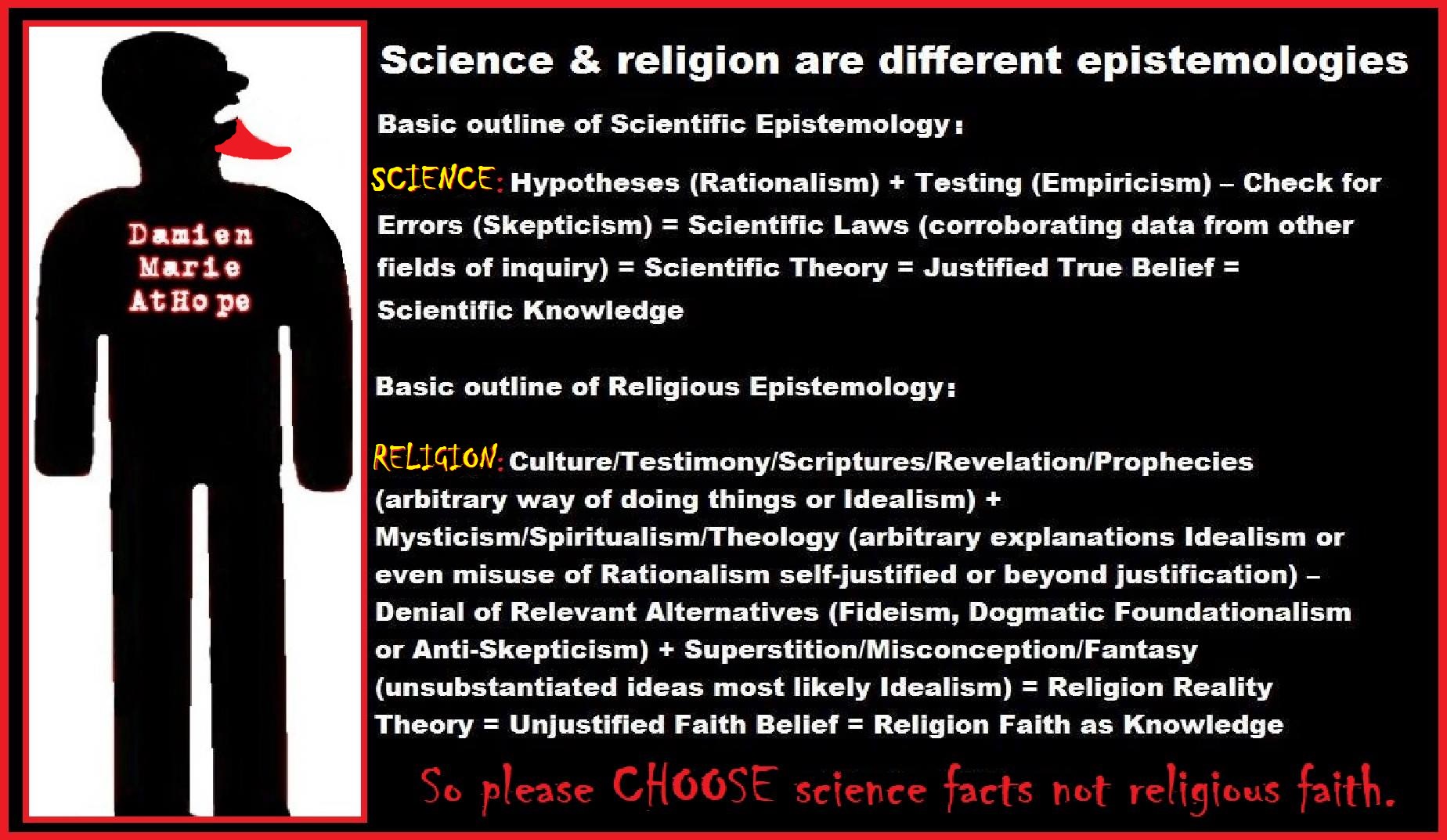

My thoughts on Religion Evolution with external links for more info:
- (Pre-Animism Africa mainly, but also Europe, and Asia at least 300,000 years ago), (Pre-Animism – Oxford Dictionaries)
- (Animism Africa around 100,000 years ago), (Animism – Britannica.com)
- (Totemism Europe around 50,000 years ago), (Totemism – Anthropology)
- (Shamanism Siberia around 30,000 years ago), (Shamanism – Britannica.com)
- (Paganism Turkey around 12,000 years ago), (Paganism – BBC Religion)
- (Progressed Organized Religion “Institutional Religion” Egypt around 5,000 years ago), (Ancient Egyptian Religion – Britannica.com)
- (CURRENT “World” RELIGIONS after 4,000 years ago) (Origin of Major Religions – Sacred Texts)
- (Early Atheistic Doubting at least by 2,600 years ago) (History of Atheism – Wikipedia)
“Religion is an Evolved Product” and Yes, Religion is Like Fear Given Wings…
Atheists talk about gods and religions for the same reason doctors talk about cancer, they are looking for a cure, or a firefighter talks about fires because they burn people and they care to stop them. We atheists too often feel a need to help the victims of mental slavery, held in the bondage that is the false beliefs of gods and the conspiracy theories of reality found in religions.
Understanding Religion Evolution:
- Pre-Animism (at least 300,000 years ago)
- Animism (Africa: 100,000 years ago)
- Totemism (Europe: 50,000 years ago)
- Shamanism (Siberia: 30,000 years ago)
- Paganism (Turkey: 12,000 years ago)
- Progressed organized religion (Egypt: 5,000 years ago), (Egypt, the First Dynasty 5,150 years ago)
- CURRENT “World” RELIGIONS (after 4,000 years ago)
- Early Atheistic Doubting (at least by 2,600 years ago)
“An Archaeological/Anthropological Understanding of Religion Evolution”
It seems ancient peoples had to survived amazing threats in a “dangerous universe (by superstition perceived as good and evil),” and human “immorality or imperfection of the soul” which was thought to affect the still living, leading to ancestor worship. This ancestor worship presumably led to the belief in supernatural beings, and then some of these were turned into the belief in gods. This feeble myth called gods were just a human conceived “made from nothing into something over and over, changing, again and again, taking on more as they evolve, all the while they are thought to be special,” but it is just supernatural animistic spirit-belief perceived as sacred.
Quick Evolution of Religion?
Pre-Animism (at least 300,000 years ago) pre-religion is a beginning that evolves into later Animism. So, Religion as we think of it, to me, all starts in a general way with Animism (Africa: 100,000 years ago) (theoretical belief in supernatural powers/spirits), then this is physically expressed in or with Totemism (Europe: 50,000 years ago) (theoretical belief in mythical relationship with powers/spirits through a totem item), which then enlists a full-time specific person to do this worship and believed interacting Shamanism (Siberia/Russia: 30,000 years ago) (theoretical belief in access and influence with spirits through ritual), and then there is the further employment of myths and gods added to all the above giving you Paganism (Turkey: 12,000 years ago) (often a lot more nature-based than most current top world religions, thus hinting to their close link to more ancient religious thinking it stems from). My hypothesis is expressed with an explanation of the building of a theatrical house (modern religions development). Progressed organized religion (Egypt: 5,000 years ago) with CURRENT “World” RELIGIONS (after 4,000 years ago).
Historically, in large city-state societies (such as Egypt or Iraq) starting around 5,000 years ago culminated to make religion something kind of new, a sociocultural-governmental-religious monarchy, where all or at least many of the people of such large city-state societies seem familiar with and committed to the existence of “religion” as the integrated life identity package of control dynamics with a fixed closed magical doctrine, but this juggernaut integrated religion identity package of Dogmatic-Propaganda certainly did not exist or if developed to an extent it was highly limited in most smaller prehistoric societies as they seem to lack most of the strong control dynamics with a fixed closed magical doctrine (magical beliefs could be at times be added or removed). Many people just want to see developed religious dynamics everywhere even if it is not. Instead, all that is found is largely fragments until the domestication of religion.
Religions, as we think of them today, are a new fad, even if they go back to around 6,000 years in the timeline of human existence, this amounts to almost nothing when seen in the long slow evolution of religion at least around 70,000 years ago with one of the oldest ritual worship. Stone Snake of South Africa: “first human worship” 70,000 years ago. This message of how religion and gods among them are clearly a man-made thing that was developed slowly as it was invented and then implemented peace by peace discrediting them all. Which seems to be a simple point some are just not grasping how devastating to any claims of truth when we can see the lie clearly in the archeological sites.
I wish people fought as hard for the actual values as they fight for the group/clan names political or otherwise they think support values. Every amount spent on war is theft to children in need of food or the homeless kept from shelter.
Here are several of my blog posts on history:
- To Find Truth You Must First Look
- (Magdalenian/Iberomaurusian) Connections to the First Paganists of the early Neolithic Near East Dating from around 17,000 to 12,000 Years Ago
- Natufians: an Ancient People at the Origins of Agriculture and Sedentary Life
- Possible Clan Leader/Special “MALE” Ancestor Totem Poles At Least 13,500 years ago?
- Jewish People with DNA at least 13,200 years old, Judaism, and the Origins of Some of its Ideas
- Baltic Reindeer Hunters: Swiderian, Lyngby, Ahrensburgian, and Krasnosillya cultures 12,020 to 11,020 years ago are evidence of powerful migratory waves during the last 13,000 years and a genetic link to Saami and the Finno-Ugric peoples.
- The Rise of Inequality: patriarchy and state hierarchy inequality
- Fertile Crescent 12,500 – 9,500 Years Ago: fertility and death cult belief system?
- 12,400 – 11,700 Years Ago – Kortik Tepe (Turkey) Pre/early-Agriculture Cultic Ritualism
- Ritualistic Bird Symbolism at Gobekli Tepe and its “Ancestor Cult”
- Male-Homosexual (female-like) / Trans-woman (female) Seated Figurine from Gobekli Tepe
- Could a 12,000-year-old Bull Geoglyph at Göbekli Tepe relate to older Bull and Female Art 25,000 years ago and Later Goddess and the Bull cults like Catal Huyuk?
- Sedentism and the Creation of goddesses around 12,000 years ago as well as male gods after 7,000 years ago.
- Alcohol, where Agriculture and Religion Become one? Such as Gobekli Tepe’s Ritualistic use of Grain as Food and Ritual Drink
- Neolithic Ritual Sites with T-Pillars and other Cultic Pillars
- Paganism: Goddesses around 12,000 years ago then Male Gods after 7,000 years ago
- First Patriarchy: Split of Women’s Status around 12,000 years ago & First Hierarchy: fall of Women’s Status around 5,000 years ago.
- Natufians: an Ancient People at the Origins of Agriculture and Sedentary Life
- J DNA and the Spread of Agricultural Religion (paganism)
- Paganism: an approximately 12,000-year-old belief system
- Paganism 12,000 years old: related to “Anarchism and Socialism” (Pre-Capitalism)
- Shaman burial in Israel 12,000 years ago and the Shamanism Phenomena
- Need to Mythicized: gods and goddesses
- 12,000 – 7,000 Years Ago – Paleo-Indian Culture (The Americas)
- 12,000 – 2,000 Years Ago – Indigenous-Scandinavians (Nordic)
- Norse did not wear helmets with horns?
- Pre-Pottery Neolithic Skull Cult around 11,500 to 8,400 Years Ago?
- 10,400 – 10,100 Years Ago, in Turkey the Nevail Cori Religious Settlement
- 9,000-6,500 Years Old Submerged Pre-Pottery/Pottery Neolithic Ritual Settlements off Israel’s Coast
- Catal Huyuk “first religious designed city” around 9,500 to 7,700 years ago (Turkey)
- Cultic Hunting at Catal Huyuk “first religious designed city”
- Special Items and Art as well as Special Elite Burials at Catal Huyuk
- New Rituals and Violence with the appearance of Pottery and People?
- Haplogroup N and its related Uralic Languages and Cultures
- Ainu people, Sámi people, Native Americans, the Ancient North Eurasians, and Paganistic-Shamanism with Totemism
- Ideas, Technology and People from Turkey, Europe, to China and Back again 9,000 to 5,000 years ago?
- First Pottery of Europe and the Related Cultures
- 9,000 years old Neolithic Artifacts Judean Desert and Hills Israel
- 9,000-7,000 years-old Sex and Death Rituals: Cult Sites in Israel, Jordan, and the Sinai
- 9,000-8500 year old Horned Female shaman Bad Dürrenberg Germany
- Neolithic Jewelry and the Spread of Farming in Europe Emerging out of West Turkey
- 8,600-year-old Tortoise Shells in Neolithic graves in central China have Early Writing and Shamanism
- Swing of the Mace: the rise of Elite, Forced Authority, and Inequality begin to Emerge 8,500 years ago?
- Migrations and Changing Europeans Beginning around 8,000 Years Ago
- My “Steppe-Anatolian-Kurgan hypothesis” 8,000/7,000 years ago
- Around 8,000-year-old Shared Idea of the Mistress of Animals, “Ritual” Motif
- Pre-Columbian Red-Paint (red ochre) Maritime Archaic Culture 8,000-3,000 years ago
- 7,522-6,522 years ago Linear Pottery culture which I think relates to Arcane Capitalism’s origins
- Arcane Capitalism: Primitive socialism, Primitive capital, Private ownership, Means of production, Market capitalism, Class discrimination, and Petite bourgeoisie (smaller capitalists)
- 7,500-4,750 years old Ritualistic Cucuteni-Trypillian culture of Moldova, Romania, and Ukraine
- Roots of a changing early society 7,200-6,700 years ago Jordan and Israel
- Agriculture religion (Paganism) with farming reached Britain between about 7,000 to 6,500 or so years ago and seemingly expressed in things like Western Europe’s Long Barrows
- My Thoughts on Possible Migrations of “R” DNA and Proto-Indo-European?
- “Millet” Spreading from China 7,022 years ago to Europe and related Language may have Spread with it leading to Proto-Indo-European
- Proto-Indo-European (PIE), ancestor of Indo-European languages: DNA, Society, Language, and Mythology
- The Dnieper–Donets culture and Asian varieties of Millet from China to the Black Sea region of Europe by 7,022 years ago
- Kurgan 6,000 years ago/dolmens 7,000 years ago: funeral, ritual, and other?
- 7,020 to 6,020-year-old Proto-Indo-European Homeland of Urheimat or proposed home of their Language and Religion
- Ancient Megaliths: Kurgan, Ziggurat, Pyramid, Menhir, Trilithon, Dolman, Kromlech, and Kromlech of Trilithons
- The Mytheme of Ancient North Eurasian Sacred-Dog belief and similar motifs are found in Indo-European, Native American, and Siberian comparative mythology
- Elite Power Accumulation: Ancient Trade, Tokens, Writing, Wealth, Merchants, and Priest-Kings
- Sacred Mounds, Mountains, Kurgans, and Pyramids may hold deep connections?
- Between 7,000-5,000 Years ago, rise of unequal hierarchy elite, leading to a “birth of the State” or worship of power, strong new sexism, oppression of non-elites, and the fall of Women’s equal status
- Paganism 7,000-5,000 years old: related to “Anarchism and Socialism” (Capitalism) (World War 0) Elite & their slaves
- Hell and Underworld mythologies starting maybe as far back as 7,000 to 5,000 years ago with the Proto-Indo-Europeans?
- The First Expression of the Male God around 7,000 years ago?
- White (light complexion skin) Bigotry and Sexism started 7,000 years ago?
- Around 7,000-year-old Shared Idea of the Divine Bird (Tutelary and/or Trickster spirit/deity), “Ritual” Motif
- Nekhbet an Ancient Egyptian Vulture Goddess and Tutelary Deity
- 6,720 to 4,920 years old Ritualistic Hongshan Culture of Inner Mongolia with 5,000-year-old Pyramid Mounds and Temples
- First proto-king in the Balkans, Varna culture around 6,500 years ago?
- 6,500–5,800 years ago in Israel Late Chalcolithic (Copper Age) Period in the Southern Levant Seems to Express Northern Levant Migrations, Cultural and Religious Transfer
- KING OF BEASTS: Master of Animals “Ritual” Motif, around 6,000 years old or older…
- Around 6000-year-old Shared Idea of the Solid Wheel & the Spoked Wheel-Shaped Ritual Motif
- “The Ghassulian Star,” a mysterious 6,000-year-old mural from Jordan; a Proto-Star of Ishtar, Star of Inanna or Star of Venus?
- Religious/Ritual Ideas, including goddesses and gods as well as ritual mounds or pyramids from Northeastern Asia at least 6,000 years old, seemingly filtering to Iran, Iraq, the Mediterranean, Europe, Egypt, and the Americas?
- Maykop (5,720–5,020 years ago) Caucasus region Bronze Age culture-related to Copper Age farmers from the south, influenced by the Ubaid period and Leyla-Tepe culture, as well as influencing the Kura-Araxes culture
- 5-600-year-old Tomb, Mummy, and First Bearded Male Figurine in a Grave
- Kura-Araxes Cultural 5,520 to 4,470 years old DNA traces to the Canaanites, Arabs, and Jews
- Minoan/Cretan (Keftiu) Civilization and Religion around 5,520 to 3,120 years ago
- Evolution Of Science at least by 5,500 years ago
- 5,500 Years old birth of the State, the rise of Hierarchy, and the fall of Women’s status
- “Jiroft culture” 5,100 – 4,200 years ago and the History of Iran
- Stonehenge: Paganistic Burial and Astrological Ritual Complex, England (5,100-3,600 years ago)
- Around 5,000-year-old Shared Idea of the “Tree of Life” Ritual Motif
- Complex rituals for elite, seen from China to Egypt, at least by 5,000 years ago
- Around 5,000 years ago: “Birth of the State” where Religion gets Military Power and Influence
- The Center of the World “Axis Mundi” and/or “Sacred Mountains” Mythology Could Relate to the Altai Mountains, Heart of the Steppe
- Progressed organized religion starts, an approximately 5,000-year-old belief system
- China’s Civilization between 5,000-3,000 years ago, was a time of war and class struggle, violent transition from free clans to a Slave or Elite society
- Origin of Logics is Naturalistic Observation at least by around 5,000 years ago.
- Paganism 5,000 years old: progressed organized religion and the state: related to “Anarchism and Socialism” (Kings and the Rise of the State)
- Ziggurats (multi-platform temples: 4,900 years old) to Pyramids (multi-platform tombs: 4,700 years old)
- Did a 4,520–4,420-year-old Volcano In Turkey Inspire the Bible God?
- Finland’s Horned Shaman and Pre-Horned-God at least 4,500 years ago?
- 4,000-year-Old Dolmens in Israel: A Connected Dolmen Religious Phenomenon?
- Creation myths: From chaos, Ex nihilo, Earth-diver, Emergence, World egg, and World parent
- Bronze Age “Ritual” connections of the Bell Beaker culture with the Corded Ware/Single Grave culture, which were related to the Yamnaya culture and Proto-Indo-European Languages/Religions
- Low Gods (Earth/ Tutelary deity), High Gods (Sky/Supreme deity), and Moralistic Gods (Deity enforcement/divine order)
- The exchange of people, ideas, and material-culture including, to me, the new god (Sky Father) and goddess (Earth Mother) religion between the Cucuteni-Trypillians and others which is then spread far and wide
- Koryaks: Indigenous People of the Russian Far East and Big Raven myths also found in Tlingit, Haida, Tsimshian, and other Indigenous People of North America
- 42 Principles Of Maat (Egyptian Goddess of the justice) around 4,400 years ago, 2000 Years Before Ten Commandments
- “Happy Easter” Well Happy Eostre/Ishter
- 4,320-3,820 years old “Shimao” (North China) site with Totemistic-Shamanistic Paganism and a Stepped Pyramid
- 4,250 to 3,400 Year old Stonehenge from Russia: Arkaim?
- 4,100-year-old beaker with medicinal & flowering plants in a grave of a woman in Scotland
- Early European Farmer ancestry, Kelif el Boroud people with the Cardial Ware culture, and the Bell Beaker culture Paganists too, spread into North Africa, then to the Canary Islands off West Africa
- Flood Accounts: Gilgamesh epic (4,100 years ago) Noah in Genesis (2,600 years ago)
- Paganism 4,000 years old: related to “Anarchism and Socialism” (First Moralistic gods, then the Origin time of Monotheism)
- When was the beginning: TIMELINE OF CURRENT RELIGIONS, which start around 4,000 years ago.
- Early Religions Thought to Express Proto-Monotheistic Systems around 4,000 years ago
- Kultepe? An archaeological site with a 4,000 years old women’s rights document.
- Single God Religions (Monotheism) = “Man-o-theism” started around 4,000 years ago with the Great Sky Spirit/God Tiān (天)?
- Confucianism’s Tiān (Shangdi god 4,000 years old): Supernaturalism, Pantheism or Theism?
- Yes, Your Male God is Ridiculous
- Mythology, a Lunar Deity is a Goddess or God of the Moon
- Sacred Land, Hills, and Mountains: Sami Mythology (Paganistic Shamanism)
- Horse Worship/Sacrifice: mythical union of Ruling Elite/Kingship and the Horse
- The Amorite/Amurru people’s God Amurru “Lord of the Steppe”, relates to the Origins of the Bible God?
- Bronze Age Exotic Trade Routes Spread Quite Far as well as Spread Religious Ideas with Them
- Sami and the Northern Indigenous Peoples Landscape, Language, and its Connection to Religion
- Prototype of Ancient Analemmatic Sundials around 3,900-3,150 years ago and a Possible Solar Connection to gods?
- Judaism is around 3,450 or 3,250 years old. (“Paleo-Hebrew” 3,000 years ago and Torah 2,500 years ago)
- The Weakening of Ancient Trade and the Strengthening of Religions around 3000 years ago?
- Are you aware that there are religions that worship women gods, explain now religion tears women down?
- Animistic, Totemistic, and Paganistic Superstition Origins of bible god and the bible’s Religion.
- Myths and Folklore: “Trickster gods and goddesses”
- Jews, Judaism, and the Origins of Some of its Ideas
- An Old Branch of Religion Still Giving Fruit: Sacred Trees
- Dating the BIBLE: naming names and telling times (written less than 3,000 years ago, provable to 2,200 years ago)
- Did a Volcano Inspire the bible god?
- Dené–Yeniseian language, Old Copper Complex, and Pre-Columbian Mound Builders?
- No “dinosaurs and humans didn’t exist together just because some think they are in the bible itself”
- Sacred Shit and Sacred Animals?
- Everyone Killed in the Bible Flood? “Nephilim” (giants)?
- Hey, Damien dude, I have a question for you regarding “the bible” Exodus.
- Archaeology Disproves the Bible
- Bible Battle, Just More, Bible Babble
- The Jericho Conquest lie?
- Canaanites and Israelites?
- Accurate Account on how did Christianity Began?
- Let’s talk about Christianity.
- So the 10 commandments isn’t anything to go by either right?
- Misinformed christian
- Debunking Jesus?
- Paulism vs Jesus
- Ok, you seem confused so let’s talk about Buddhism.
- Unacknowledged Buddhism: Gods, Savior, Demons, Rebirth, Heavens, Hells, and Terrorism
- His Foolishness The Dalai Lama
- Yin and Yang is sexist with an ORIGIN around 2,300 years ago?
- I Believe Archaeology, not Myths & Why Not, as the Religious Myths Already Violate Reason!
- Archaeological, Scientific, & Philosophic evidence shows the god myth is man-made nonsense.
- Aquatic Ape Theory/Hypothesis? As Always, Just Pseudoscience.
- Ancient Aliens Conspiracy Theorists are Pseudohistorians
- The Pseudohistoric and Pseudoscientific claims about “Bakoni Ruins” of South Africa
- Why do people think Religion is much more than supernaturalism and superstitionism?
- Religion is an Evolved Product
- Was the Value of Ancient Women Different?
- 1000 to 1100 CE, human sacrifice Cahokia Mounds a pre-Columbian Native American site
- Feminist atheists as far back as the 1800s?
- Promoting Religion as Real is Mentally Harmful to a Flourishing Humanity
- Screw All Religions and Their Toxic lies, they are all fraud
- Forget Religions’ Unfounded Myths, I Have Substantiated “Archaeology Facts.”
- Religion Dispersal throughout the World
- I Hate Religion Just as I Hate all Pseudoscience
- Exposing Scientology, Eckankar, Wicca and Other Nonsense?
- Main deity or religious belief systems
- Quit Trying to Invent Your God From the Scraps of Science.
- Archaeological, Scientific, & Philosophic evidence shows the god myth is man-made nonsense.
- Ancient Alien Conspiracy Theorists: Misunderstanding, Rhetoric, Misinformation, Fabrications, and Lies
- Misinformation, Distortion, and Pseudoscience in Talking with a Christian Creationist
- Judging the Lack of Goodness in Gods, Even the Norse God Odin
- Challenging the Belief in God-like Aliens and Gods in General
- A Challenge to Christian use of Torture Devices?
- Yes, Hinduism is a Religion
- Trump is One of the Most Reactionary Forces of Far-right Christian Extremism
- Was the Bull Head a Symbol of God? Yes!
- Primate Death Rituals
- Christian – “God and Christianity are objectively true”
- Australopithecus afarensis Death Ritual?
- You Claim Global Warming is a Hoax?
- Doubter of Science and Defamer of Atheists?
- I think that sounds like the Bible?
- History of the Antifa (“anti-fascist”) Movements
- Indianapolis Anti-Blasphemy Laws #Free Soheil Rally
- Damien, you repeat the golden rule in so many forms then you say religion is dogmatic?
- Science is a Trustable Methodology whereas Faith is not Trustable at all!
- Was I ever a believer, before I was an atheist?
- Atheists rise in reason
- Mistrust of science?
- Open to Talking About the Definition of ‘God’? But first, we address Faith.
- ‘United Monarchy’ full of splendor and power – Saul, David, and Solomon? Most likely not.
- Is there EXODUS ARCHAEOLOGY? The short answer is “no.”
- Lacking Proof of Bigfoots, Unicorns, and Gods is Just a Lack of Research?
- Religion and Politics: Faith Beliefs vs. Rational Thinking
- Hammer of Truth that lying pig RELIGION: challenged by an archaeologist
- “The Hammer of Truth” -ontology question- What do You Mean by That?
- Navigation of a bad argument: Ad Hominem vs. Attack
- Why is it Often Claimed that Gods have a Gender?
- Why are basically all monotheistic religions ones that have a male god?
- Shifting through the Claims in support of Faith
- Dear Mr. AtHope, The 20th Century is an Indictment of Secularism and a Failed Atheist Century
- An Understanding of the Worldwide Statistics and Dynamics of Terrorist Incidents and Suicide Attacks
- Intoxication and Evolution? Addressing and Assessing the “Stoned Ape” or “Drunken Monkey” Theories as Catalysts in Human Evolution
- Sacred Menstrual cloth? Inanna’s knot, Isis knot, and maybe Ma’at’s feather?
- Damien, why don’t the Hebrews accept the bible stories?
- Dealing with a Troll and Arguing Over Word Meaning
- Knowledge without Belief? Justified beliefs or disbeliefs worthy of Knowledge?
- Afrocentrism and African Religions
- Crecganford @crecganford offers history & stories of the people, places, gods, & culture
- Empiricism-Denier?
I am not an academic. I am a revolutionary that teaches in public, in places like social media, and in the streets. I am not a leader by some title given but from my commanding leadership style of simply to start teaching everywhere to everyone, all manner of positive education.



“Theists, there has to be a god, as something can not come from nothing.”
Well, thus something (unknown) happened and then there was something. This does not tell us what the something that may have been involved with something coming from nothing. A supposed first cause, thus something (unknown) happened and then there was something is not an open invitation to claim it as known, neither is it justified to call or label such an unknown as anything, especially an unsubstantiated magical thinking belief born of mythology and religious storytelling.


While hallucinogens are associated with shamanism, it is alcohol that is associated with paganism.
The Atheist-Humanist-Leftist Revolutionaries Shows in the prehistory series:
Show two: Pre-animism 300,000 years old and animism 100,000 years old: related to “Anarchism and Socialism”
Show tree: Totemism 50,000 years old: related to “Anarchism and Socialism”
Show four: Shamanism 30,000 years old: related to “Anarchism and Socialism”
Show five: Paganism 12,000 years old: related to “Anarchism and Socialism”
Show six: Emergence of hierarchy, sexism, slavery, and the new male god dominance: Paganism 7,000-5,000 years old: related to “Anarchism and Socialism” (Capitalism) (World War 0) Elite and their slaves!
Prehistory: related to “Anarchism and Socialism” the division of labor, power, rights, and recourses: VIDEO
Pre-animism 300,000 years old and animism 100,000 years old: related to “Anarchism and Socialism”: VIDEO
Totemism 50,000 years old: related to “Anarchism and Socialism”: VIDEO
Shamanism 30,000 years old: related to “Anarchism and Socialism”: VIDEO
Paganism 12,000 years old: related to “Anarchism and Socialism” (Pre-Capitalism): VIDEO
Paganism 7,000-5,000 years old: related to “Anarchism and Socialism” (Capitalism) (World War 0) Elite and their slaves: VIEDO
Paganism 5,000 years old: progressed organized religion and the state: related to “Anarchism and Socialism” (Kings and the Rise of the State): VIEDO
Paganism 4,000 years old: related to “Anarchism and Socialism” (First Moralistic gods, then the Origin time of Monotheism): VIEDO
I do not hate simply because I challenge and expose myths or lies any more than others being thought of as loving simply because of the protection and hiding from challenge their favored myths or lies.
The truth is best championed in the sunlight of challenge.
An archaeologist once said to me “Damien religion and culture are very different”
My response, So are you saying that was always that way, such as would you say Native Americans’ cultures are separate from their religions? And do you think it always was the way you believe?
I had said that religion was a cultural product. That is still how I see it and there are other archaeologists that think close to me as well. Gods too are the myths of cultures that did not understand science or the world around them, seeing magic/supernatural everywhere.
I personally think there is a goddess and not enough evidence to support a male god at Çatalhöyük but if there was both a male and female god and goddess then I know the kind of gods they were like Proto-Indo-European mythology.
This series idea was addressed in, Anarchist Teaching as Free Public Education or Free Education in the Public: VIDEO
Our 12 video series: Organized Oppression: Mesopotamian State Force and the Politics of power (9,000-4,000 years ago), is adapted from: The Complete and Concise History of the Sumerians and Early Bronze Age Mesopotamia (7000-2000 BC): https://www.youtube.com/watch?v=szFjxmY7jQA by “History with Cy“
Show #1: Mesopotamian State Force and the Politics of Power (Samarra, Halaf, Ubaid)
Show #2: Mesopotamian State Force and the Politics of Power
Show #3: Mesopotamian State Force and the Politics of Power (Uruk and the First Cities)
Show #4: Mesopotamian State Force and the Politics of Power (First Kings)
Show #5: Mesopotamian State Force and the Politics of Power (Early Dynastic Period)
Show #6: Mesopotamian State Force and the Politics of Power
Show #7: Mesopotamian State Force and the Politics of Power (Sargon and Akkadian Rule)
Show #9: Mesopotamian State Force and the Politics of Power (Gudea of Lagash and Utu-hegal)
Show #12: Mesopotamian State Force and the Politics of Power (Aftermath and Legacy of Sumer)

The “Atheist-Humanist-Leftist Revolutionaries”
Cory Johnston ☭ Ⓐ Atheist Leftist @Skepticallefty & I (Damien Marie AtHope) @AthopeMarie (my YouTube & related blog) are working jointly in atheist, antitheist, antireligionist, antifascist, anarchist, socialist, and humanist endeavors in our videos together, generally, every other Saturday.
Why Does Power Bring Responsibility?
Think, how often is it the powerless that start wars, oppress others, or commit genocide? So, I guess the question is to us all, to ask, how can power not carry responsibility in a humanity concept? I know I see the deep ethical responsibility that if there is power their must be a humanistic responsibility of ethical and empathic stewardship of that power. Will I be brave enough to be kind? Will I possess enough courage to be compassionate? Will my valor reach its height of empathy? I as everyone, earns our justified respect by our actions, that are good, ethical, just, protecting, and kind. Do I have enough self-respect to put my love for humanity’s flushing, over being brought down by some of its bad actors? May we all be the ones doing good actions in the world, to help human flourishing.
I create the world I want to live in, striving for flourishing. Which is not a place but a positive potential involvement and promotion; a life of humanist goal precision. To master oneself, also means mastering positive prosocial behaviors needed for human flourishing. I may have lost a god myth as an atheist, but I am happy to tell you, my friend, it is exactly because of that, leaving the mental terrorizer, god belief, that I truly regained my connected ethical as well as kind humanity.
Cory and I will talk about prehistory and theism, addressing the relevance to atheism, anarchism, and socialism.
At the same time as the rise of the male god, 7,000 years ago, there was also the very time there was the rise of violence, war, and clans to kingdoms, then empires, then states. It is all connected back to 7,000 years ago, and it moved across the world.
Cory Johnston: https://damienmarieathope.com/2021/04/cory-johnston-mind-of-a-skeptical-leftist/?v=32aec8db952d
The Mind of a Skeptical Leftist (YouTube)
Cory Johnston: Mind of a Skeptical Leftist @Skepticallefty
The Mind of a Skeptical Leftist By Cory Johnston: “Promoting critical thinking, social justice, and left-wing politics by covering current events and talking to a variety of people. Cory Johnston has been thoughtfully talking to people and attempting to promote critical thinking, social justice, and left-wing politics.” http://anchor.fm/skepticalleft
Cory needs our support. We rise by helping each other.
Cory Johnston ☭ Ⓐ @Skepticallefty Evidence-based atheist leftist (he/him) Producer, host, and co-host of 4 podcasts @skeptarchy @skpoliticspod and @AthopeMarie
Damien Marie AtHope (“At Hope”) Axiological Atheist, Anti-theist, Anti-religionist, Secular Humanist. Rationalist, Writer, Artist, Poet, Philosopher, Advocate, Activist, Psychology, and Armchair Archaeology/Anthropology/Historian.
Damien is interested in: Freedom, Liberty, Justice, Equality, Ethics, Humanism, Science, Atheism, Antiteism, Antireligionism, Ignosticism, Left-Libertarianism, Anarchism, Socialism, Mutualism, Axiology, Metaphysics, LGBTQI, Philosophy, Advocacy, Activism, Mental Health, Psychology, Archaeology, Social Work, Sexual Rights, Marriage Rights, Woman’s Rights, Gender Rights, Child Rights, Secular Rights, Race Equality, Ageism/Disability Equality, Etc. And a far-leftist, “Anarcho-Humanist.”
I am not a good fit in the atheist movement that is mostly pro-capitalist, I am anti-capitalist. Mostly pro-skeptic, I am a rationalist not valuing skepticism. Mostly pro-agnostic, I am anti-agnostic. Mostly limited to anti-Abrahamic religions, I am an anti-religionist.
To me, the “male god” seems to have either emerged or become prominent around 7,000 years ago, whereas the now favored monotheism “male god” is more like 4,000 years ago or so. To me, the “female goddess” seems to have either emerged or become prominent around 11,000-10,000 years ago or so, losing the majority of its once prominence around 2,000 years ago due largely to the now favored monotheism “male god” that grow in prominence after 4,000 years ago or so.
My Thought on the Evolution of Gods?
Animal protector deities from old totems/spirit animal beliefs come first to me, 13,000/12,000 years ago, then women as deities 11,000/10,000 years ago, then male gods around 7,000/8,000 years ago. Moralistic gods around 5,000/4,000 years ago, and monotheistic gods around 4,000/3,000 years ago.
To me, animal gods were likely first related to totemism animals around 13,000 to 12,000 years ago or older. Female as goddesses was next to me, 11,000 to 10,000 years ago or so with the emergence of agriculture. Then male gods come about 8,000 to 7,000 years ago with clan wars. Many monotheism-themed religions started in henotheism, emerging out of polytheism/paganism.

Damien Marie AtHope (Said as “At” “Hope”)/(Autodidact Polymath but not good at math):
Axiological Atheist, Anti-theist, Anti-religionist, Secular Humanist, Rationalist, Writer, Artist, Jeweler, Poet, “autodidact” Philosopher, schooled in Psychology, and “autodidact” Armchair Archaeology/Anthropology/Pre-Historian (Knowledgeable in the range of: 1 million to 5,000/4,000 years ago). I am an anarchist socialist politically. Reasons for or Types of Atheism
My Website, My Blog, & Short-writing or Quotes, My YouTube, Twitter: @AthopeMarie, and My Email: damien.marie.athope@gmail.com

